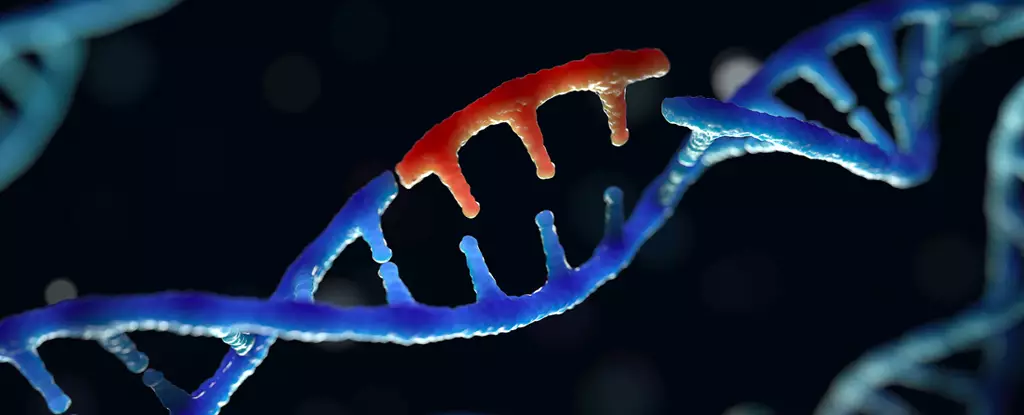When viruses invade our bodies, they sometimes leave behind remnants of their genetic material. These fragments, known as endogenous retroviruses (ERVs), can be passed down through generations, lying dormant in our genomes. Once considered mere ‘junk’ DNA, these ancient viral sequences have been found to play a crucial role in our evolution as mammals. Researchers, such as bioinformatician Atma Ivancevic from the University of Colorado, have uncovered a surprising connection between these zombie virus parts and cancer.
Recent studies have revealed that cancer cells can exploit these ERVs to promote their own growth and survival. By activating genes that should remain dormant, tumors are able to proliferate unchecked. In a groundbreaking experiment on colorectal cancer cells, researchers found that a specific ERV, LTR10, was responsible for regulating genes linked to tumor formation. When LTR10 was disabled, genes associated with cancer growth, including XRCC4, which promotes therapy resistance, were also deactivated. This discovery opened up new possibilities for improving cancer treatment outcomes.
Despite these significant findings, researchers are still working to fully understand the extent of ERVs’ impact on cancer development. While they have identified the genes controlled by LTR10 in tumor cells, further studies are needed to establish their direct role in tumor progression. By analyzing patient-derived organoids, scientists hope to uncover the specific connections between ERVs and cancer growth and spread. As our bodies age and our immune defenses weaken, the reactivation of dormant virus fragments may contribute to a range of health issues in later life.
As we delve deeper into the complexities of our biological makeup, new avenues of research are emerging. Scientists are beginning to appreciate the intricate interplay between ancient viral sequences and disease states such as cancer. By shedding light on these once-overlooked aspects of our genome, researchers are uncovering novel targets for therapeutic interventions. The gradual unravelling of the mysteries behind ERVs and their role in cancer signifies a promising step forward in the fight against this devastating disease.
The link between viruses and cancer is a fascinating area of research that continues to yield surprising discoveries. The exploration of ERVs as potential drivers of tumor growth opens up new possibilities for targeted therapies and personalized treatment approaches. By embracing the complexity of our genetic makeup, we may uncover innovative strategies for combating cancer and improving patient outcomes. As we navigate the intricate web of virus-host interactions, we move closer to unlocking the secrets of cancer and revolutionizing the field of oncology.

Leave a Reply